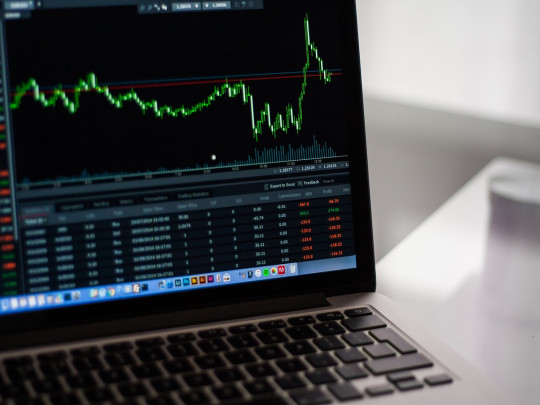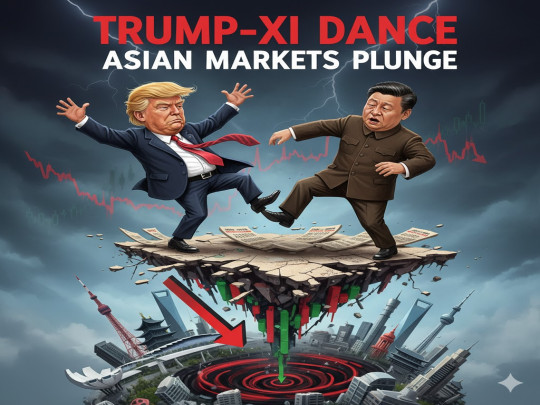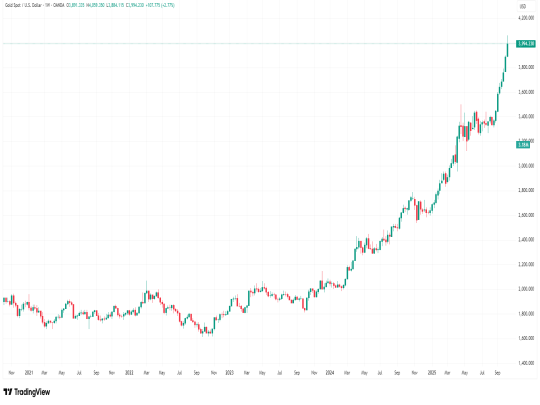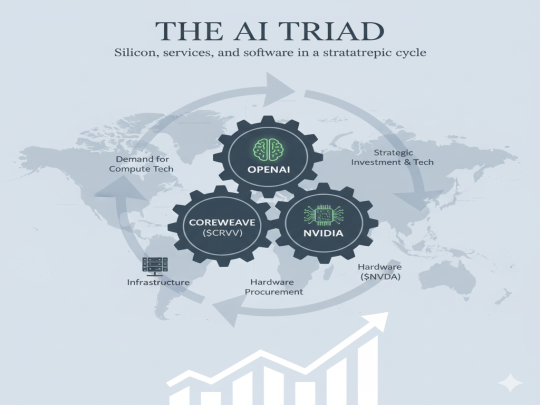Stock Market Update: S&P 500 and Nasdaq Hit Fresh Highs as Nvidia, Moderna, and Coinbase Lead the Charge
Stock Market Update: S&P 500 and Nasdaq reached record highs with strong gains in Nvidia, Microsoft, and Coinbase. Moderna surged after flu vaccine data, while Tesla dipped ahead of delivery numbers. Walt Disney, Oracle, and Kratos also rallied on upgrades.

- Early Monday US stock futures pointed higher as Wall Street aimed to end a strong June at new records, buoyed by continued trade optimism after Canada backed away from a planned digital services tax.
- The positive open looks to extend a strong month for markets (S&P +4.4%, Nasdaq +6.1%). Friday saw the S&P 500 and Nasdaq close at new records despite late-session volatility after President Trump threatened to end trade talks with Canada.
- Notable premarket movers Monday included major banks (JPMorgan, BofA) rising after passing Fed stress tests. Juniper Networks (+8.4%) and HPE (+5.6%) jumped after the DOJ cleared their merger. Disney (+2%), Oracle (+1.9%), and Kratos Defense (+2.6%) gained on analyst upgrades. Tesla (-0.6%) dipped ahead of its Q2 delivery report.
- Trade tensions with Canada eased significantly after it backed away from its digital services tax following a threat from President Trump. A new US-UK trade deal also took effect Monday, setting tariffs and quotas.
- Senate Republicans advanced President Trump's tax and spending cut bill, which now heads for a full Senate vote. China's June manufacturing PMI remained in contraction for a third month, while German inflation unexpectedly cooled to 2%.
- Company news included Moderna (+5%) gaining on positive trial results for its flu vaccine. Coinbase was June's top S&P 500 stock, up about 44%. Apple continues to significantly underperform its tech peers year-to-date.
- Global markets Monday saw Europe trade lower. Asia finished mixed, with Japan's Nikkei hitting an 11-month high while Hong Kong fell.
- US Treasury yields edged lower Monday morning (10-year around 4.257%) as investors monitored the progress of the Republican tax bill.
- Gold edged higher Monday on a softer dollar. Oil prices were steady, but on track for a second straight monthly gain. Bitcoin gained on easing trade tensions and progress on US regulation.
- Market sentiment is strong heading into the end of the month, with the S&P 500 at a record high after recovering from its April tariff-induced slump. Focus now shifts to key US jobs data in this holiday-shortened week.
U.S. stock futures rose early Monday as Wall Street looked to close out a remarkable June with even more record highs, buoyed by renewed optimism around global trade. The S&P 500 and Nasdaq Composite, both of which closed at all-time highs on Friday, have rebounded sharply from their lows in April — a month marred by escalating tariff tensions. With just one trading session left in the month, the S&P 500 is up 4.4% for June, while the Nasdaq has surged nearly 6.1%. The Dow Jones Industrial Average has also gained about 3.7%.
Friday’s rally marked a major milestone for the market’s comeback. Despite fresh comments from President Donald Trump regarding tariffs on Canadian goods, traders shrugged off the geopolitical noise and pushed the S&P 500 to a new high. The broad market index’s recent surge represents a stunning reversal from its April lows, when it was nearly 18% below the year’s peak due to fears that aggressive U.S. trade actions would derail economic growth.
Stocks had initially rallied in February on the back of Trump’s promises of business-friendly policies. However, that optimism quickly faded when the administration moved forward with harsh tariff measures, leading to a steep sell-off. The tide turned again in late April when the White House softened its stance and signaled openness to negotiating new trade deals, sparking a powerful rebound in risk appetite.
As June wraps up, investor sentiment appears resilient, with markets pricing in both easing geopolitical risks and potentially supportive central bank policy later in the year. The combination of receding trade war fears and robust earnings in the tech sector has propelled the Nasdaq to a nearly 6% monthly gain, the best among the major averages.
With the S&P 500 now at record levels and the Nasdaq nearing new highs, all eyes will be on upcoming trade developments, macroeconomic data, and central bank commentary to determine whether this momentum can carry through into July.
US Market Previous Day:
The S&P 500 climbed 0.52% on Friday to close at a new record of 6,173.07, capping off a strong month and a sharp recovery from the April slump. Earlier in the session, the index surged as much as 0.76% to an intraday high of 6,187.68, surpassing its previous record of 6,147.43. The Nasdaq Composite also joined the record-setting rally, rising 0.52% to end the day at an all-time high of 20,273.46. The Dow Jones Industrial Average advanced 432.43 points, or 1%, finishing at 43,819.27.
Markets initially rallied following upbeat remarks from Commerce Secretary Howard Lutnick, who told Bloomberg that the U.S. and China had finalized a trade framework, and that similar deals with 10 other major trading partners were expected soon. Those comments ignited broad optimism around de-escalating trade tensions, pushing equities to fresh highs earlier in the day.
However, some of the early gains faded after President Donald Trump posted on Truth Social that trade talks with Canada were being terminated. The reversal injected renewed uncertainty, tempering the session’s earlier bullish tone. Even so, the major indexes held on to meaningful gains and secured new record closes.
The tech sector continued to lead the charge, with heavyweights Nvidia and Microsoft both reaching all-time highs. Their strength provided a key lift to the Nasdaq Composite, reinforcing investor confidence in the growth potential of artificial intelligence and cloud computing.
US Futures Remain in Green:
- Dow Jones Industrial Average futures rose by 0.57%
- S&P 500 futures showed gains of 0.42%
- Nasdaq Composite futures lead the pack with gains of 0.61%.
Biggest Premarket Movers
- Nvidia: Stock rose 0.5%, demonstrating resilience despite a Financial Times report that investors sold more than $1 billion of the company’s stock in the past year, with a large portion of those sales occurring in June as they capitalized on the company's sharp valuation spike driven by its central role in the artificial intelligence industry.
- Tesla: Stock fell 0.6% as the electric vehicle manufacturer is expected to announce its second-quarter delivery numbers on Wednesday. The decline comes as the company continues to navigate flagging demand and controversy surrounding the political stances of CEO Elon Musk.
- JPMorgan Chase, Bank of America, Citigroup, and Wells Fargo: Shares of these major banks all rose after the Federal Reserve’s annual "stress test" yielded optimistic results. The strong showing suggests the banks are well-capitalized to withstand a severe recession, potentially leading them to increase the amount of excess capital they distribute to shareholders through dividends or stock buybacks.
- Juniper Networks and Hewlett Packard Enterprise: Juniper Networks' stock rose 8.4% while shares of Hewlett Packard Enterprise (HPE) gained 5.6%. The rally followed the U.S. Justice Department's settlement of its lawsuit that had challenged HPE’s $14 billion all-cash acquisition of the networking gear maker, clearing a major hurdle for the deal to proceed.
- Hyatt Hotels: Stock rose 0.5% after the hotel chain announced it will sell the entirety of Playa Hotels’ owned real estate portfolio to Tortuga Resorts for $2 billion. Hyatt had only recently completed its acquisition of Playa for $2.6 billion including debt in February.
- Stellantis: Stock fell 0.4% after the U.S. National Highway Traffic Safety Administration announced that the auto giant is recalling 250,651 vehicles in the U.S. due to an improperly sealed side curtain airbag.
- Walt Disney: Stock rose 2% after Jefferies upgraded its rating on the entertainment giant to “buy” from “hold.” The firm expressed significant optimism about the future of Disney’s cruise business, projecting it could lead to a revenue uplift of over $1 billion for the 2026 fiscal year.
- Oracle: Stock rose 1.9% following an upgrade by Stifel to “buy” from “hold.” The investment firm cited positive expectations for the software giant's cloud business growth as the primary reason for the more bullish stance.
- Kratos Defense & Security Solutions: Stock rose 2.6% after Goldman Sachs upgraded the IT security and defense company to “buy” from “neutral.” Goldman's reasoning pointed to Kratos's strategic investments in defense supply chain areas that it deems "critical to the future of warfare."
Tariff Update:
Canada has officially backed away from its digital services tax just one day before payments were set to begin, in a move aimed at smoothing over frictions with the United States. The decision marks a significant reversal from Ottawa’s earlier stance this month, when officials had insisted the 3% levy on large American tech firms such as Google, Meta, and Amazon would proceed despite strong objections from Washington.
The turnaround comes in response to a sharp warning from U.S. President Donald Trump, who over the weekend declared an end to all trade discussions with Canada in retaliation for the tax. In a statement Sunday night, Canadian officials framed the policy reversal as a gesture made "in anticipation" of broader negotiations that could result in a comprehensive trade agreement. The two countries have now reached a temporary truce, with Prime Minister Mark Carney aiming to finalize a new economic and security pact by July 21.
Carney emphasized that Canada’s priorities remain focused on securing a deal that benefits Canadian workers and businesses. The decision to suspend the digital tax opens the door for renewed cooperation, potentially de-escalating one of the most serious trade flare-ups between the North American allies since the introduction of Trump’s “reciprocal” tariff doctrine.
Meanwhile, a separate trade arrangement between the U.K. and U.S. comes into effect Monday. Under the terms, the U.K. becomes the first country to formalize a new deal under Trump’s reciprocal tariff policy, gaining preferential access for automobile exports. Specifically, the first 100,000 British vehicles sold annually in the U.S. will face a 10% tariff, while those exceeding the quota will be subject to a steeper 25% import duty.
The broader deal, which took effect June 30, also includes a general 10% tariff on U.K. goods entering the U.S. However, unresolved issues remain—particularly regarding levies on British metal exports, which continue to face uncertainty. Still, the agreement represents a step forward in transatlantic trade ties at a time when the U.S. is recalibrating its relationships with key allies under a new, more protectionist framework.
Key Economic Data/News:
Senate Republicans advanced President Trump’s sweeping tax cut and spending reduction package on Sunday after a flurry of last-minute negotiations secured support from key GOP skeptics. The bill, which seeks to extend Trump’s 2017 tax cuts and implement major reductions to federal spending, is now on track for a full Senate vote as early as Monday. The legislation must then return to the House, where leaders are aiming to meet Trump’s self-imposed July 4 deadline. However, with senators having made significant revisions, particularly to appease fiscal conservatives, House Republicans may not fully rally behind the updated version.
The bill’s provisions include permanent extensions to individual and corporate tax cuts from the 2017 law, which critics argue disproportionately favor high earners and large corporations. At the same time, it proposes steep rollbacks to Medicaid spending, raising alarms about the potential impact on low-income households. A Congressional Budget Office analysis estimates that the legislation could add more than $3.9 trillion to the national debt over the next decade — a figure that is likely to spark further debate as the bill advances.
In Asia, China’s manufacturing sector remained in contraction for the third consecutive month in June, though signs of stabilization emerged. The official manufacturing Purchasing Managers’ Index rose marginally to 49.7 from 49.5 in May, in line with market expectations but still below the neutral 50 mark that separates expansion from contraction. While sub-indices for production and new orders showed modest improvement, with readings of 51.0 and 50.2 respectively, factory employment and inventories continued to shrink, reflecting ongoing fragility in the industrial base. The non-manufacturing PMI ticked up to 50.5 in June, helped by accelerating construction activity, even as the services component weakened slightly.
Meanwhile in Europe, Germany’s inflation rate unexpectedly cooled to the European Central Bank’s 2% target in June, according to preliminary data released Monday by Destatis. The decline from May’s 2.1% reading defied analyst forecasts for a rise to 2.2% and could strengthen the case for the ECB to continue its gradual policy easing. The harmonized index, which facilitates comparisons across the euro zone, signals that inflationary pressures are moderating in the bloc’s largest economy, providing policymakers with more room to maneuver amid lingering concerns over growth and external trade.
Earnings Season/Company News:
Shares of Moderna climbed over 5% in premarket trading on Monday after the company announced positive phase three trial results for its experimental mRNA-based flu vaccine. The encouraging data paves the way for regulatory approval of the flu shot and also revives hopes for the company’s shelved combination Covid-19 and flu vaccine. Moderna had previously withdrawn its application for the combo vaccine, citing the need to include efficacy data from the flu shot trial. With these results now in hand, the company plans to resubmit the combination vaccine application and pursue approval for the standalone flu vaccine later this year, according to Stephen Hoge, Moderna’s head of research and development. Despite the positive news, Moderna’s stock has lagged the broader market in 2025, down nearly 35% year to date while the S&P 500 is up about 5%.
Coinbase emerged as the top-performing stock in the S&P 500 for the month of June, fueled by a confluence of bullish catalysts including the Senate’s passage of the GENIUS Act, strong post-IPO performance from Circle, and the exchange’s formal inclusion in the S&P 500 at the end of May. The crypto exchange has notched a roughly 44% gain in June, pacing for its third consecutive monthly advance — the first such streak since the end of 2023. Thursday saw Coinbase shares return to levels last seen during its IPO day in 2021, marking a milestone moment in its market recovery since the April 8 lows, which followed Trump’s sweeping tariff announcement.
While many tech giants hit fresh records, Apple has remained on the sidelines. Nvidia surged to an all-time high Friday and is now up nearly 17% in 2025, with a 9% gain this week alone. Microsoft also closed at a new record and has added 18% year to date. Meanwhile, Apple’s stock inched up just 0.45% this week and remains down about 19% on the year, underperforming its peers as investor enthusiasm continues to center around AI-focused firms.
Tesla, however, is on track to end the week in the green, buoyed by investor excitement over the debut of its autonomous robotaxi service in Austin, Texas. The stock gained more than 8% on Monday following the launch, which CEO Elon Musk described as “successful.” Tesla shares are up more than 1% for the week, as the rollout revives expectations that the EV maker can gain meaningful ground in the autonomous vehicle space, where competitors like Alphabet’s Waymo currently lead.
Global Market Trends:
European markets traded lower in choppy conditions Monday, weighed down by investor caution ahead of the looming July tariff deadline tied to U.S. trade talks. Despite the day’s losses, the pan-European Stoxx 600 index remained on course to notch its second consecutive quarterly gain, though it was poised to end the month in the red. Broader regional indexes followed a similar pattern, with losses across several sectors. One exception was defense, where European stocks posted a 1% gain, set for their sixth straight monthly increase and on track to close at a record high for the quarter. Analysts attribute the sector’s strength to shifting geopolitical dynamics and increased defense commitments across the continent, which have underpinned equity market resilience in recent months.
In Asia, markets ended mixed as investors sifted through a series of macroeconomic updates and tracked progress on global trade negotiations. Japan’s Nikkei 225 surged 0.84% to close at 40,487.39, hitting an over 11-month high, supported by upbeat industrial production data. The broader Topix index also moved higher, closing up 0.43% at 2,852.84. South Korea’s Kospi added 0.52% to settle at 3,071.70, while the Kosdaq finished flat at 781.50. Australia’s S&P/ASX 200 rose 0.33% to 8,542.30. In China, the mainland’s CSI 300 index rose 0.37% to 3,936.08 after the latest PMI data signaled continued softness but some signs of stabilization. Hong Kong’s Hang Seng Index underperformed, slipping 0.87% to close at 24,072.28 amid tech sector losses.
Debt Market:
U.S. Treasury yields retreated as traders watched developments around President Donald Trump’s contentious tax cut and spending reduction package. The 10-year Treasury yield dipped more than 2 basis points to 4.257%, while the 30-year yield fell over 3 basis points to 4.814%. The 2-year yield also edged down slightly to 3.729%, as bond investors remained cautious ahead of potential fiscal policy shifts and key votes in Congress.
Commodities and Other Assets:
Gold edged higher on Monday as the U.S. dollar hovered near its lowest level since March 2022, enhancing bullion's appeal to non-dollar buyers. A softer dollar typically supports gold prices by making the metal cheaper for holders of other currencies. The precious metal’s gains came as investors looked ahead to a series of key U.S. labor market data due later this week, including nonfarm payrolls and job openings, which could shape expectations around the Federal Reserve’s monetary policy path. With markets pricing in roughly two rate cuts by year-end, any signs of labor market softness could reinforce those bets and further support gold. However, analysts caution that gold remains vulnerable to volatility until the Fed’s intentions become clearer.
Oil prices were steady to start the week as easing geopolitical tensions in the Middle East offset uncertainty around demand and potential changes to OPEC+ production policy. After experiencing its steepest weekly drop since March 2023, crude stabilized on Monday, though remained locked in a range amid limited new catalysts. Prices had surged to over $80 per barrel earlier this month during the Iran-Israel conflict but have since retreated to around $67. Despite this pullback, both Brent and WTI benchmarks are still on track for a second consecutive monthly gain of more than 5%. Market attention is now shifting to the July 6 OPEC+ meeting, where the group is expected to approve a 411,000 barrels per day output increase for August, extending gradual hikes seen since May. Analysts say the market will likely continue sideways until a clearer signal emerges on demand trends or geopolitical developments disrupt supply.
Bitcoin moved higher on Monday, gaining support from a rebound in investor sentiment driven by U.S. trade and regulatory developments. The leading cryptocurrency rose as much as 3.6% for the month of June, buoyed by optimism surrounding renewed U.S.-Canada trade talks after Ottawa rescinded its digital services tax targeting American tech firms. Broader crypto prices also advanced, aided by growing expectations of U.S. rate cuts later this year and signs of increased institutional interest. Key support also came from progress on Capitol Hill, where a stablecoin regulation bill backed by the Trump administration gained momentum. Separately, housing giants Freddie Mac and Fannie Mae announced they are exploring the use of digital assets as collateral in select home loan programs, offering further validation for crypto integration into traditional finance.
Market Sentiment:
Friday’s sharp gains capped a remarkable turnaround for Wall Street, highlighting the market’s resilience in the face of persistent geopolitical tensions and policy uncertainty. The S&P 500 has surged more than 20% since bottoming out on April 8 and is now up nearly 5% year-to-date. Much of the rally has been powered by renewed momentum in artificial intelligence, with heavyweight names like Nvidia and Microsoft driving investor enthusiasm. The recovery has come despite major headwinds, including a spike in oil prices triggered by the Israel-Iran conflict and rising Treasury yields amid deepening deficit concerns.
Tariff relief has played a key role in lifting sentiment. Beijing confirmed it had finalized the terms of its long-anticipated trade agreement with Washington, easing fears of a renewed trade war. Meanwhile, President Donald Trump hinted at flexibility in his administration’s enforcement of the upcoming round of “reciprocal” tariffs, suggesting a potential 90-day pause could still evolve. These signals helped calm markets and fueled further buying interest into quarter-end.
Looking ahead, investor focus is turning to Washington and upcoming economic data that could influence the Federal Reserve’s next move. All eyes are on whether the Senate can pass Trump’s sweeping economic package, dubbed the “one, big, beautiful” bill. While the bill narrowly cleared a key procedural vote Saturday night, its fate remains uncertain in the House, where some Republican lawmakers continue to express reservations.
Meanwhile, a packed economic calendar looms. The ADP private employment report is due Wednesday, followed by the highly anticipated nonfarm payrolls report on Thursday — both of which are likely to shape expectations for the Fed’s monetary policy path. U.S. markets will close early on Thursday ahead of the July 4 holiday and remain shut on Friday, meaning investors will have only a short window to respond to the jobs data. Currently, traders are pricing in around 66 basis points of Fed rate cuts by year-end, with the first move expected in September.



